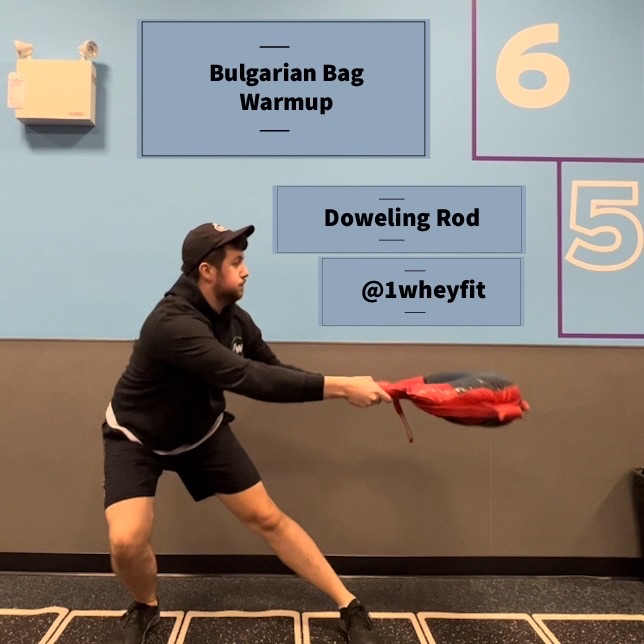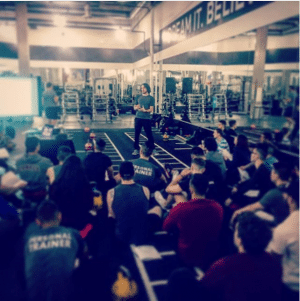Running is one of the easiest and fastest ways to get physical activity in. It requires no equipment and you can tailor it to your fitness level with ease. You don’t need a membership and you can perform it anywhere & at anytime. For these reasons and more it is one of the most commonly used cardio forms. However, along with this comes a high risk of overuse injury.
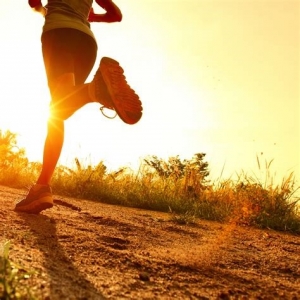
Most of us are not natural runners. However, for some weird reason when most of us do run we think we are a famous world renowned athlete and we push ourselves to extremes that our bodies are not ready for. When we do this (beginners and vets alike) we see runners knee (patellofemoral syndrome), Achilles tendinopathy, plantar fasciitis, ITB syndrome, shin splints, ankle sprains and much more. Reality Check, the latest running shoe & a sidewalk calf stretch does not set people up for success.
Here are some of the hazards and how to avoid them:
- Increasing distance and pace too quickly – This is by far the one I see most. Increasing your distance is attainable but there are good and bad (i.e. progressive overload) ways of doing so. If you are running weekly I would suggest upping the distance by 10% weekly. Furthermore, there is something to be said for moderation & cross training. You should run every day! That is a sure fire way to accumulate overuse injuries, such as runner’s knee & plantar fasciitis. Instead, try cross training. Use another low impact or upper body dominant form of exercise to help build cardiorespiratory endurance while giving your impact absorbing, lower body a break. You can still run 3-5x/week, but I would suggest endurance training variety. This will help avoid plateaus & chronic overuse syndromes.
In regards to pace, variety and performance can be achieved with shorter runs. For ex. practice “race pace” runs and repeated sprint intervals can be added as your mileage & intensity improve. But, during interval training be sure to start with a short distance and amount of sets (i.e. 200-400m 3-4x).
The idea is to build both distance and intensity gradually, and above all listen to your body and know your limits. Please also allow for rest days. There will be no gains when you cannot even walk!

2. Incorporating Hills – Whether it is uphill or downhill it is important to note the amount of stress and strain that hills puts on the body. A lot of uphill can lead to Achilles tendinopathy / irritation and downhill can lead to ITB syndrome. It is important that you warm up, cool down & recover the body adequately. Make sure to foam roll the muscles being used for the activity you are performing. Additionally, a light walk or jog is not going to cut it. You are likely to give it your all, so a meager warm up is not going to work.
In regards to all those articles that stress uphill work for increased posterior chain activation (i.e. your butt), yes they are true. However, if you have a properly activating glute you are likely to overwork and strain the hamstring muscle. So, listen closely, this is important. If you are starting to feel tension or stress in areas that you are not meant to, actually listen to your body and do something about it.
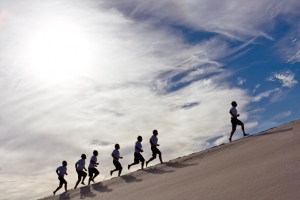
3. Improper footwear – Here is a shocker, the things on your feet will help support you during your run! Running shoes make a huge difference! Whether you need orthotics or not is not the the purpose of this article. If you have a foot issue, make sure to seek out a professional. Instead, lets talk about the trend of using toe shoes when running. For the record, I have nothing against these toe shoes. However, I do have an issue with their use, especially without considering how the past might impact the future. You have worn shoes your whole life and these shoes mostly have pretty good cushioning. These shoes support the muscles of your feet & the joint surrounding them. Remember this term – progressive overload; I mentioned it earlier. It is not a good idea to switch these well cushioned shoes for no cushioning and then run 10k or more. The repetitive pounding on the road will likely cause plantar fasciitis or something worse, a stress fracture. Like everything else, if you switch to toe shoes, you have to gradually progress their use. Your muscles need to become stronger and that isn’t going to happen overnight. Start by wearing them around the house, at work and on walks. Then 10-15 min of running (every 2nd run), adding 10-15 min per week. Eventually you will have safely arrived at your desired destination of “modern caveman”.
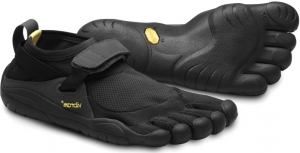
4. Improper body mechanics – The last and most important hazard of them all; poor body mechanics. All injuries that occur during running will have something to do with overuse / poor recovery or the way your body is aligned while you run. For this reason, it is important to add postural & resistance (i.e. strength) training into your routine. Properly aligned strength training will definitely set you up for success on the pavement or trails. Everyone has different issues, habits, genetics & previous injuries. If you love running and you don’t want down time due to injury, it is essential to receive a movement assessment through by a qualified professional. With that said, the common areas most runners should focus on are as follows: intrinsic core, middle and low trapezius muscles, latissimus dorsi, the gluteals (max and med), quadriceps (in particular the VMO), hamstrings and the calves. Don’t panic, these key running muscles are all included within common gym movements like the bridge, side plank, lunge, 1ft squat, stiff legged deadlift, push-ups & rowing. Note upper body is required and will help propel you at the end of your run when your lower body is fatiguing.

If you have any questions or would like more information please Follow Ashley @ap.the.pt or team BCPTI @bcpti.
Blog by:
ASHLEY PEREIRA-DOCHERTY, BCPTI Instructor
BS, MPT, NASM CPT
Tags:
Related Posts
We’re here to help you!
Questions, comments or want to register? Fill out the form below and we will contact you shortly. Thanks!
"*" indicates required fields


